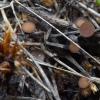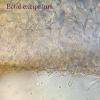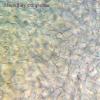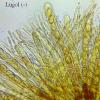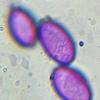
21-12-2024 09:08
Me mandan el material seco de Galicia, recolecta

21-12-2024 12:45
 Marc Detollenaere
Marc Detollenaere
Dear Forum,On naked wood of Fagus, I found some ha

17-12-2024 12:33
 Lothar Krieglsteiner
Lothar Krieglsteiner
this fluffy anamorph was repeatedly found on decid

20-12-2024 20:30
 Bernard CLESSE
Bernard CLESSE
Bonsoir à toutes et tous,Pourriez-vous m'aider à

20-12-2024 00:01
 Francois Guay
Francois Guay
Hi, I found this species on incubated Fir needles

20-12-2024 20:34
Perhaps some of you can help me identify this smal

20-12-2024 17:32
Louis DENYBonsoir forumTrouvé à Belfort, 400 m altitude, s
I have no idea:(
KOH (-)
LUGOL (-)
Diameter up to 2 mm.
Mirek

Spores looked like that today. I will check in a few days how better they will mature.
Unless it's a different genre?
Thank you Peter.
Mirek
Spores poorly mature but on some spores the ornamentation is already visible.
It turns out that it will be Pseudombrophila derrata.
What is your opinion on this subject?
Mirek
The fruitbodies look ripe so I sit down again.
Hard topic because I have no literature for Pseudombrophila.
Can anyone please send me:
Brummelen, J. van. 1995. A world-monograph of the genus Pseudombrophila.
Thank you in advance.
Mirek
I would gladly agree with you because I have had enough of this mushroom.
Spore ornamentation does not completely match this species.
You can't see it in the pictures :( I have poor photographic equipment.
When viewing under a microscope, I see only oblique ridges clearly. They are parallel to each other and do not merge.
If I am not mistaken it with P. merdaria ornamentation is more irregular???
Re-measured the spores:
(11.7) 11.9 - 12.9 (13.2) × (6.6) 6.8 - 7.8 (8) µm
Q = (1.5) 1.6 - 1.8 (1.9); N = 22
Me = 12.4 × 7.2 µm; Qe = 1.7
Peter, did I understand you sent me an email?
I haven't received any message?
best regards
Mirek
165.06
159.46
155.11
187.81
173.65
168.84
I don't know why but the mail from you doesn't reach me.
I have sent you an email.
If you can, try maybe in the form of an answer.
Spore ornamentation in my collection best suits Pseudombrophila petrakii and P. deerata. I don't know if there are other species with similar ornamentation?
I only have a description of P. deerata.
In my collection, the spores are slightly smaller than in the description of P. deerata.
Hair and other details are appropriate
That is why I wanted to compare with the description in the Brummelen monograph.
Unfortunately, but I don't have this one :(
Mirek
Thanks for explanation.
There is little literature on them on the internet :(
If not a problem then I would be grateful.
I did not get monograph :(
best regards
Mirek
Thank you all for your help and literature!
I analyzed all species mentioned in the monograph.
I checked all parameters in turn.
I also measured hyphae in individual layers.
The features of my find only match P. petrakii.
Therefore, despite small deviations, I decided to consider my collection as this genre:
1) the "Q" spore parameter; in my case the lower limit (1.7)
2) asci length, just above normal.
I consider the decisive features to be:
1) ornamentation
2) two types of hair
3) dimensions of hyphae in individual layers
4) substrate and habitat
I have analyzed P. merdaria carefully, but too many features do not match. The deviations are so large that I cannot accept them.
Mirek

